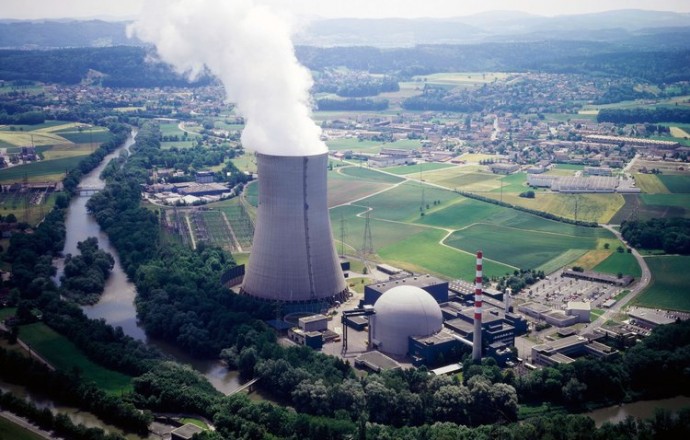Gösgen Nuclear Power Plant

Type: Pressurised water reactor
Start of commercial operations: 1979
Nominal thermal output
of reactor: 3002 MW
Gross electrical output: 1060 MWe
Net electrical output: 1010 MWe
Click here for NPP Gösgen

Type: Pressurised water reactor
Start of commercial operations: 1979
Nominal thermal output
of reactor: 3002 MW
Gross electrical output: 1060 MWe
Net electrical output: 1010 MWe
Click here for NPP Gösgen
Both Leibstadt and Beznau nuclear power plants have shown that, in the event of or after a very severe earthquake, they can ensure that their reactors are stable and safe. Dose values of one or 100 millisievert which have to be complied with will not be exceeded even after earthquakes that are only to be expected every 1,000 or 10,000 years respectively.
For the second time since the Fukushima accident in 2011, power plant operators have demonstrated that their plants are capable of withstanding an extremely rare, severe earthquake.
The steam generators at Beznau and Gösgen do not deviate from the design requirements in terms of their carbon content. This is the result of a review of the manufacturing documents. The structural integrity of the steam generators’ individual components is ensured by a large margin.
Georg Schwarz, ENSI Deputy Director and head of the NPPs Division, explains the background and context in the following interview.
The Swiss Federal Nuclear Safety Inspectorate (ENSI) requires that the Beznau and Gösgen nuclear power plants check the quality and design of the forgings of the steam generators in respect of adherence to the material specifications.
The Swiss nuclear power plants use forgings for the safety-relevant main components with fully documented manufacturing and material quality certificates. This was confirmed by the operators in response to an enquiry made by the Swiss Federal Nuclear Safety Inspectorate (ENSI).
Development and Research Work in the Field of Radiation Measurement Technology: this project deals with the verification and calibration of dosimetry systems and radiation measurement instruments. On the one hand, importance attaches to personal dosimetry, i.e. the measurement of the outer and inner radiation exposure for people. This field also covers measurements of the release […]